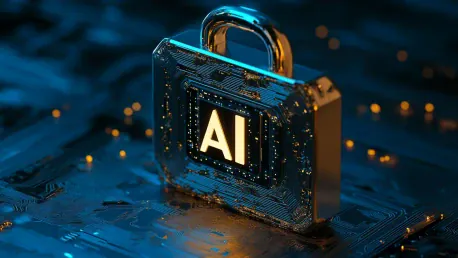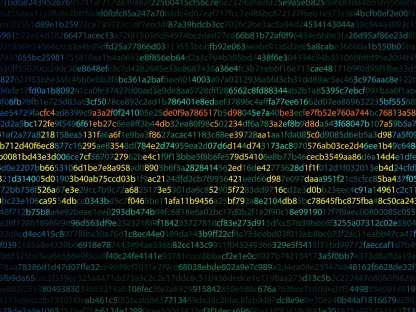Artificial Intelligence (AI) technology has seen rapid advancements, but with these advancements come significant risks. Recognizing the dual nature of AI, tech giants Nvidia and Cisco have introduced innovative tools aimed at enhancing AI security and performance. This article delves into their contributions and the broader industry trend towards ensuring AI reliability and safety.
Nvidia’s Innovative Solutions for AI Security
Nvidia Inference Microservices (NIMs)
Nvidia has launched a series of specialized microservices, collectively known as Nvidia Inference Microservices (NIMs), as part of its NeMo Guardrails collection. These microservices are designed to ensure that AI agents, such as chatbots, operate as intended without being hijacked or producing inappropriate content. The three main components of Nvidia’s microservices are: Content Safety NIM, Topic Control NIM, and Jailbreak Detection NIM.
The Content Safety NIM aims to prevent AI models from generating biased or harmful outputs by aligning responses with ethical standards. It works by analyzing both the input from a user and the output from the AI model to determine if the content is appropriate. If the content is inappropriate, actions can be taken to either warn the user or block the AI model’s output. This NIM was trained using the Aegis Content Safety Dataset, which includes approximately 33,000 interactions labeled as safe or unsafe. This ensures that AI-generated responses adhere to specified ethical standards, thereby reducing potential harm.
Topic Control NIM helps keep conversations focused on approved topics and avoids digressions or inappropriate content. It assesses the system prompt and the user’s input to ensure the conversation stays on topic. This is particularly useful in scenarios where users might try to derail the AI’s intended functionality. The Jailbreak Detection NIM is designed to detect attempts to manipulate the AI’s behavior against its intended purpose. It analyzes user inputs for signs of prompt injection attacks, attempting to prevent the AI from being overridden by such commands.
Chaining Guardrail Models for Comprehensive Security
Nvidia’s approach to ensuring the reliability and safety of AI involves chaining multiple guardrail models together. This might be necessary for more comprehensive security and compliance. While using multiple models can result in higher overheads and latency, Nvidia has opted for smaller language models (about eight billion parameters each) to balance scale and resource efficiency. These models are available for AI Enterprise customers and can also be implemented manually from Hugging Face.
Additionally, Nvidia has introduced an open-source tool called Garak. This tool identifies vulnerabilities such as data leaks, prompt injection, and hallucinations in AI applications, validating the efficacy of the guardrails. Garak’s role in scanning AI systems for potential flaws ensures that any weaknesses are promptly identified and addressed, thereby enhancing the overall security posture.
Nvidia’s methodology of chaining multiple models into a cohesive security framework allows for better compliance with varying organizational standards and regulations. The smaller size of the individual models ensures that while comprehensive security is achieved, system performance is not significantly hampered. This approach aligns with the need for robust security measures in an era where AI applications are becoming increasingly prevalent and pivotal.
Cisco’s Comprehensive AI Defense Suite
AI Defense Suite and Model Validation Tools
Cisco is also entering the AI security arena with its AI Defense Suite. Like Nvidia, Cisco aims to address AI’s reliability and security issues with similar tools but extends its focus into broader organizational applications. Cisco’s offerings include a Model Validation Tool, AI Discovery Tools, and the AI Defense Suite itself. These tools are designed to cater to a wide array of security needs within an organization, ensuring holistic protection.
The Model Validation Tool assesses the performance of AI models and informs infosec teams about potential risks associated with these models. This proactive assessment allows organizations to identify vulnerabilities before they can be exploited. The AI Discovery Tools, on the other hand, are designed to help security teams identify unauthorized or “shadow” applications deployed without IT oversight. These tools aim to ensure that all AI applications within an organization are accounted for and properly secured, mitigating the risks associated with unmonitored deployments.
The AI Defense Suite comes equipped with hundreds of guardrails to prevent AI systems from producing unwanted results. It can detect when chatbots are being used beyond their intended roles, such as accessing paid AI services. This suite provides a robust framework for ensuring that AI implementations remain within their designated boundaries, preventing misuse and potential security breaches.
Integration with Security Cloud and Secure Access Services
Cisco plans to integrate these tools into its Security Cloud and Secure Access services. One forthcoming service called AI Access will allow organizations to block user access to certain online AI services, preventing unauthorized usage. Over time, more services will be added to enhance AI security capabilities. This layered security approach ensures that organizations can enforce robust security measures across all AI deployments, mitigating various risks associated with unauthorized access.
An additional change Cisco is implementing involves refining its own customer-facing AI agents. Currently, these agents work independently for various Cisco products. Cisco plans to unify them into a single agent interface, simplifying the process for network administrators to obtain information across different components of their Cisco systems. This unification will streamline operations and improve efficiency, allowing for more seamless interaction with AI systems across different platforms.
Cisco’s VP of Engineering for AI, Anand Raghavan, has outlined a multi-year roadmap for developing more AI security tools. This development reflects the broader trend within the industry, where companies are increasingly aware of the myriad infosec threats and are making concerted efforts to create comprehensive solutions to address them. Cisco’s commitment to advancing AI security tools signifies a proactive stance towards tackling the complex challenges posed by AI technology.
Industry Trends and Other Developments
Microsoft’s AI Efforts
The article briefly mentions that Megan, an AI recruiting agent, and Microsoft’s reorganization to create a ‘CoreAI – Platform and Tools’ team are aimed at bolstering their AI capabilities. This move underscores Microsoft’s commitment to enhancing its AI portfolio and ensuring that its AI offerings are secure, reliable, and capable of meeting modern demands. By restructuring and focusing on core AI tools, Microsoft aims to streamline efforts towards creating secure AI systems that are aligned with industry standards.
Additionally, Microsoft’s focus on recruitment AI, such as Megan, indicates their proactive approach to leveraging AI in HR functions, ensuring that the technology is used ethically and effectively. This initiative demonstrates their recognition of AI’s potential to optimize various business processes while addressing potential security and ethical concerns. Through these efforts, Microsoft aims to establish a solid foundation for secure AI deployments across different sectors.
Voice-Enabled AI Agents
There is also a brief note on how AI agents can automate various tasks, including potentially malicious activities such as phone scams. This highlights the dual nature of AI technology, where its capabilities can be harnessed for both beneficial and malicious purposes. The automation of tasks by voice-enabled AI agents presents significant opportunities for efficiency but also raises concerns about misuse, especially in areas like fraud and scams.
To mitigate these risks, there is a growing emphasis on developing AI security measures that can detect and prevent malicious activities. Ensuring that voice-enabled AI agents are secure involves implementing robust authentication mechanisms, monitoring for suspicious activity, and continuously updating security protocols. These measures are crucial in safeguarding users from potential threats posed by malicious use of AI technology.
Google’s Advancements
The article touches upon Google researchers developing an attention-based LLM architecture called Titans, which can handle larger context windows and outperform ultra-large models. This advancement highlights Google’s dedication to pushing the boundaries of AI technology and creating more efficient and capable models. By focusing on attention-based architectures, Google aims to enhance the performance and reliability of its AI systems, ensuring they can handle complex tasks with greater accuracy.
Google’s advancements in AI are indicative of a broader industry trend towards developing more sophisticated and capable AI models. As these models become more advanced, ensuring their security and reliability becomes increasingly important. Google’s efforts in this direction underscore the industry’s commitment to balancing innovation with security, ensuring that AI advancements are both groundbreaking and safe.
FTC Investigation into Snap’s MyAI Chatbot
Artificial Intelligence (AI) technology has experienced swift progress, bringing along notable risks. In response to the complex nature of AI, tech leaders Nvidia and Cisco have developed cutting-edge tools designed to enhance both the security and the performance of AI systems. This initiative is not isolated but part of a broader industry effort focused on improving the reliability and safety of AI technology.
The dual nature of AI—its benefits and potential dangers—requires a balanced approach to development. Nvidia is working to integrate robust security measures within their AI platforms, ensuring that the technology not only advances but does so in a secure and reliable manner. Meanwhile, Cisco is concentrating on fortifying network infrastructures that support AI, making sure they are resilient against threats and vulnerabilities.
These advancements highlight an industry-wide commitment to addressing the challenges posed by AI. By prioritizing safety and performance, companies like Nvidia and Cisco are setting a precedent for responsible AI development. This article explores their contributions and the trend towards creating more secure and dependable AI systems.









